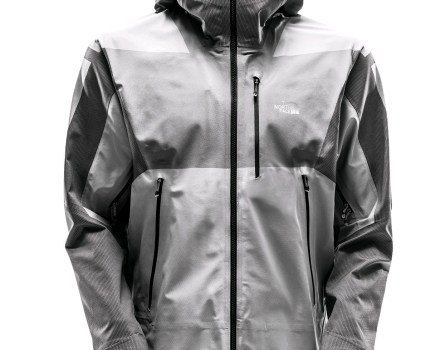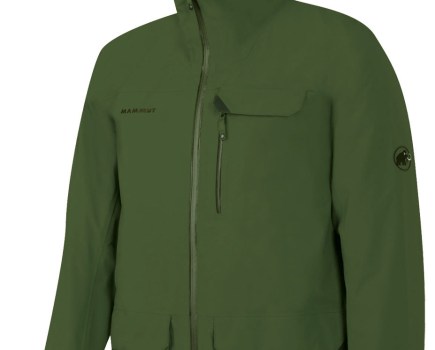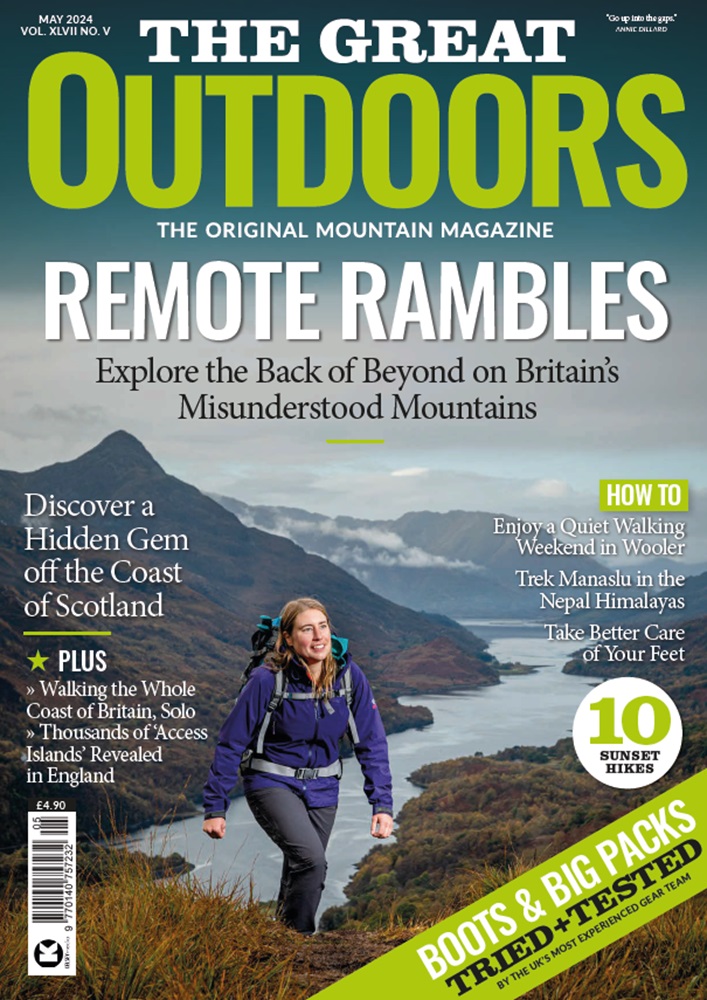Chris Townsend tests the latest waterproof jackets against each other and explains what makes a top quality product
Every year new waterproof jackets appear in the shops – new designs, new materials, new names. Are they really different to previous models though? Just what can you do to change a waterproof jacket? These questions are not as simple to answer as it might appear. Some changes really do make a difference – and not always a good one – while others really don’t. Here I’ve looked at some of this year’s crop of new jackets and tried to figure out which ones are worth considering.
The garments tested cover every type of waterproof jacket from ultralight to winter bombproof so they can’t all be directly compared. Some however balance these two extremes and are good for year-round use as long as you won’t be running mountain marathons or thrashing up icy chimneys.=
One growing area is making garments more environmentally friendly through the use of recycled fabrics and non-fluorocarbon (PFC) DWR treatments – the latter something I expect to see from more companies in the near future due to recent criticism of the detrimental effects of PFCs. One fabric even does away with the DWR altogether. Given that DWRs don’t last that long anyway the last sounds a good approach. Breathability levels haven’t increased noticeably in these new jackets. As always, despite what some companies suggest, no waterproof fabric will stay dry inside all the time. They can all be overloaded when you’re working hard and can end up quite damp. Ventilation is still the best way to let moisture out so front zips and underarm/side zips should always be opened whenever the weather allows.
Overheating leads to increased condensation too. Wearing just enough under a waterproof jacket to stay comfortable is best. Extra layers can be added on top when you stop or if you feel cold. Indeed, waterproof/ breathable fabrics work best when warm so a layer over them is better than another one underneath.
What to check for
1. Fabric
The type of fabric determines how breathable a garment will be. More expensive fabrics are usually more breathable than cheaper ones. The thickness of a fabric affects durability. Thin ones are lighter in weight but less suitable for prolonged wear.
2. Construction
2-layer: In this the waterproof layer is attached to the outer layer only. Inside there is a separate lining, usually mmesh on the body and solid on the sleeves and hood.
Two-layer garments are soft and flexible but the lining adds weight and can reduce breathability – though in a jacket with low breathability it does trap some condensation and keep it away from inner layers.
2.5 layer: This is a common construction for lightweight garments. The waterproof layer is laminated to the outer and then a very thin protective layer is printed or sprayed on the inside. The result is a light, flexible, low bulk fabric. Because of the lower protection given to the waterproof layer 2.5 layer fabrics aren’t as durable as 2 or 3 layer ones. They’re usually not as breathable as 3 layer fabrics either.
3 layer: The most durable construction in which the waterproof layer is sandwiched between the face fabric and an inner scrim. It’s the most breathable construction but also a bit stiffer and heavier than 2.5 layer.
3. Front closure
Water-resistant zips are now standard. These are not fully waterproof all the time and should have an inner flap to repel any rain that gets through. A standard zip with external and internal flaps is more secure but found on few garments these days.
4. Hood
Hoods should be easily adjusted and ideally move with your head. A wired or stiffened peak is useful in wind driven rain.
5. Ventilation
Underarm/side zips can be awkward to use but do allow good ventilation at a crucial place. They can often be used in rain when the front zip has to be fully closed. Zips that curve under the armpits are effective but the most difficult to adjust. Many companies now have side zips that run from the armpit down the arm instead as these are much easier to open and close. Pockets can be opened for ventilation too if they are mesh-lined.
6. Cuffs
Cuffs that can be opened wide are good for ventilation in the arms. Elasticised and narrow cuffs can lead to sweaty wrists.
7. Pockets
While not essential, pockets that are accessible when wearing a rucksack hipbelt are useful for items like compass, phone, snacks, map (if large enough), hat and gloves. Pockets can leak though so need water-resistant zips and/or covering flaps.
8. Fit
For the most efficient breathability, waterproof jackets should fit fairly closely. At the same time they shouldn’t be so tight that they restrict movement. And a jacket should fit comfortably over all the layers you might need to wear underneath it. Size labels should be taken as a guide only – they’re not consistent between makes. Some of the garments labelled Large in this review are actually smaller than some labelled Medium.

Rab Firewall
BEST BUY
4.5/5 Stars
Click here to read the full review.

Fjallraven Keb Eco-Shell
RECOMMENDED
4/5 Stars
Click here to read the full review.
Keela Prosport Advance
RECOMMENDED
4/5 Stars
Click here to read the full review.

Patagonia Torrentshell
RECOMMENDED
4/5 Stars
Click here to read the full review.

Black Diamond Sharp End
RECOMMENDED
4/5 Stars
Click here to read the full review.

Berghaus Hyper Hydroshell
RECOMMENDED
4/5 Stars
Click here to read the full review.

Columbia OutDry Ex Platinum Shell
RECOMMENDED
4/5 Stars
Click here to read the full review.
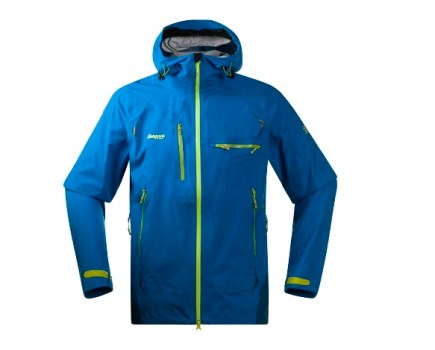
Bergans Storen
3.5/5 Stars
Click here to read the full review.
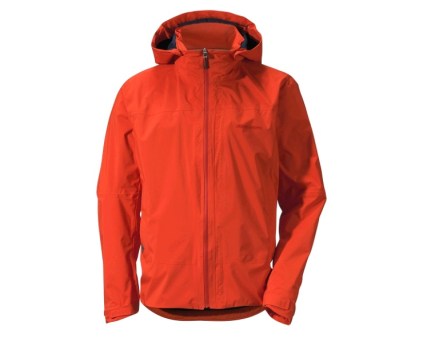
Didriksons Edge
3.5/5 Stars
Click here for the full review.

Salomon Nebula
3.5/5 Stars
Click here for the full review.


